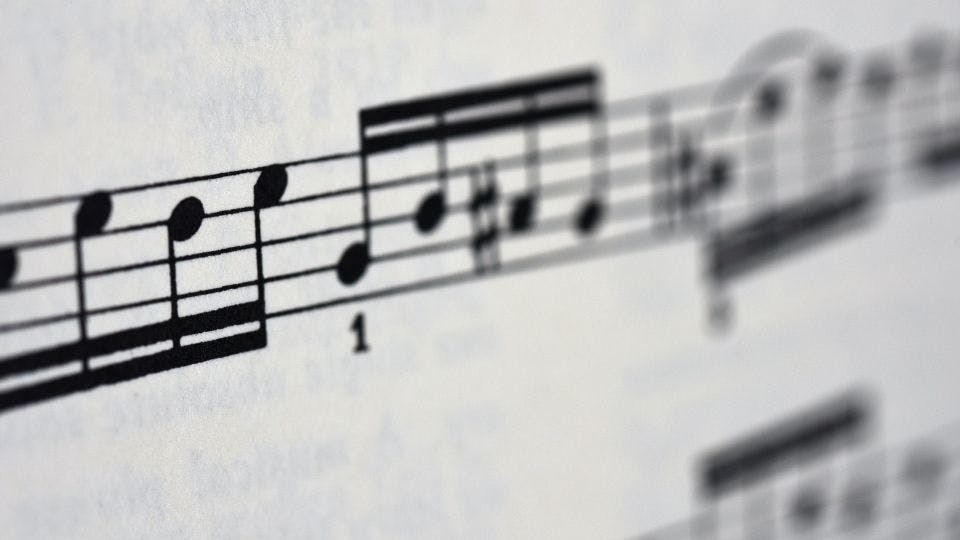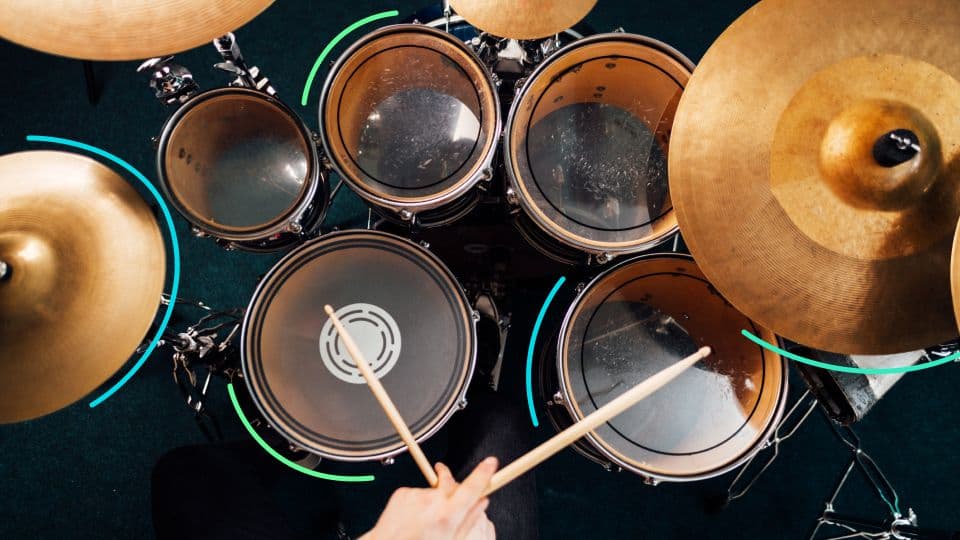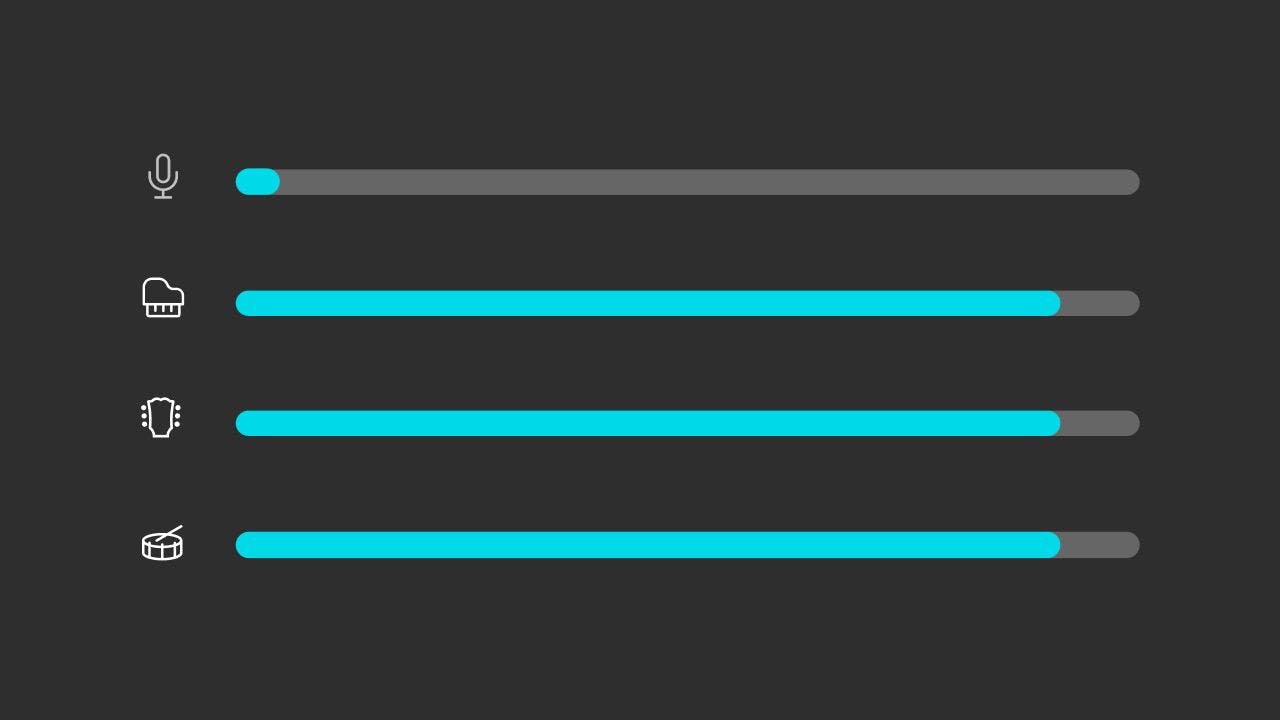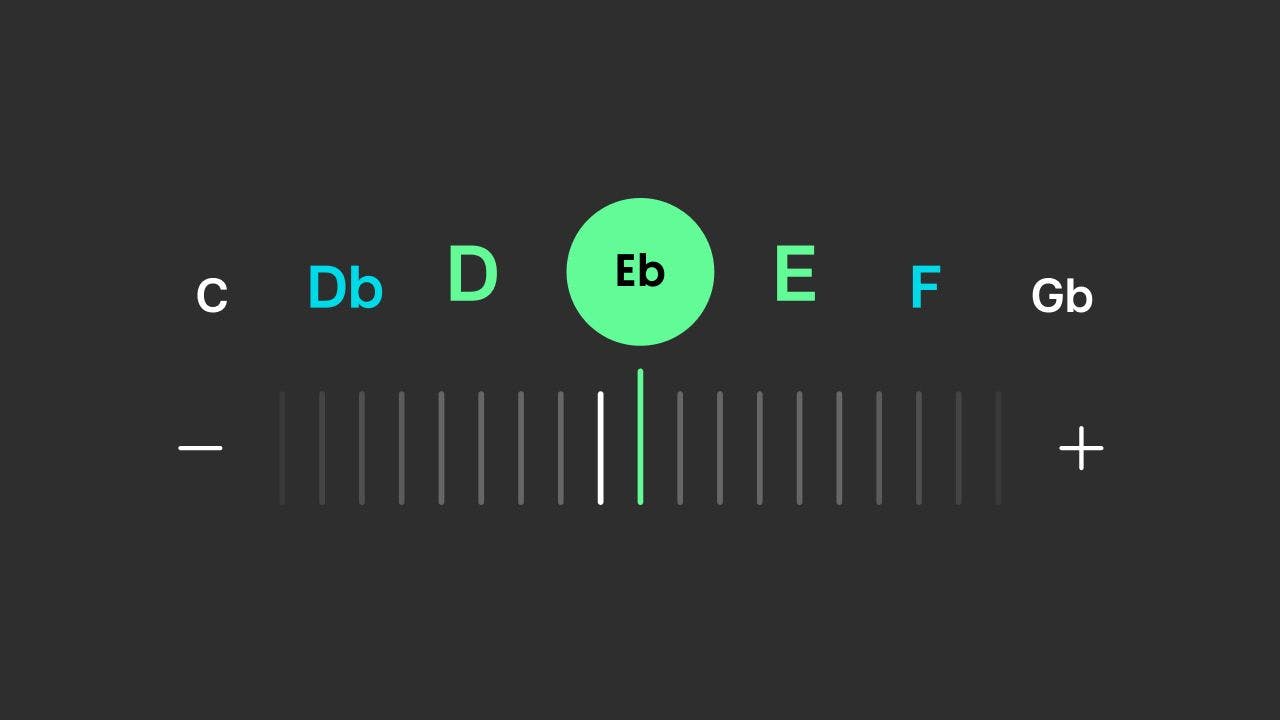Learning how to read music is like learning another language, it can look very complex, with all the letters, symbols, and other musical theory pieces that you might not understand. But just like a language, if you start with the basics and build your way up to the more complicated techniques, you can learn over time. In our step-by-step guide, we will help you learn how to read sheet music.
Step 1 - The Staff
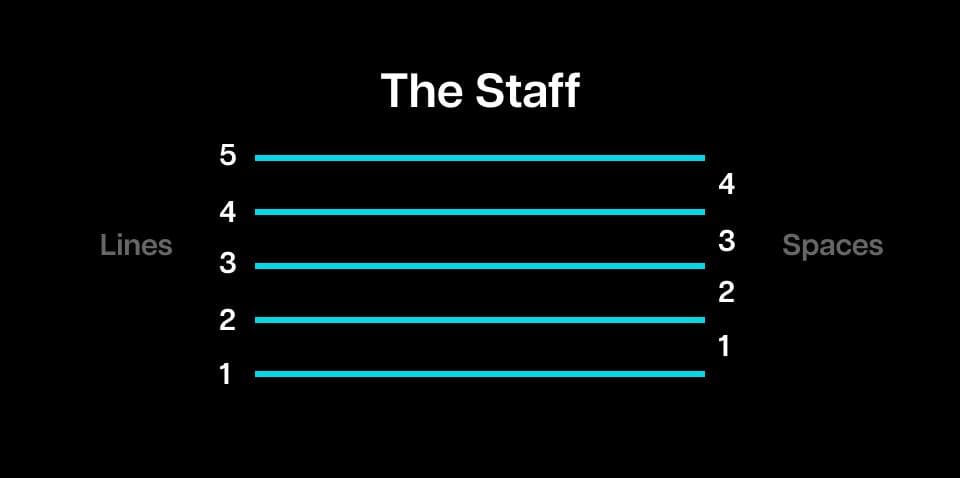
The foundation of the musical language is the staff. It has 5 lines and 4 spaces, all a placeholder for music notes. Each line and space is correlated to a note, which is determined by the clef. There are two clefs - treble and bass.
The treble clef (shown below) is also known as the G-clef. This is because the G’s inner swoop circles the second line of the staff, which is the G note.
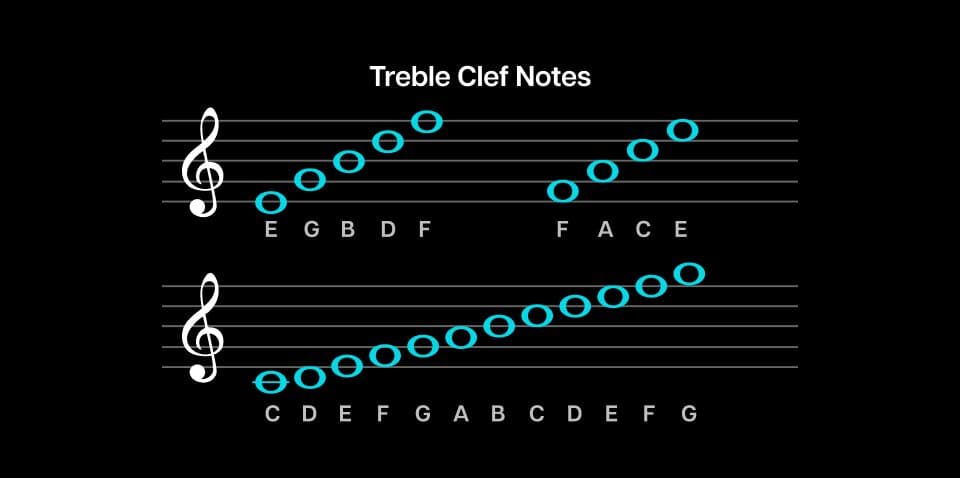
Many people use acronyms to remember the treble clef notes, pictured are the notes separated into what notes are on each line and space, and below that is every note on the treble clef.
Some common acronyms are “Every Good Boy Deserves Fudge”, and “Elvis’ Guitar Broke Down Friday”, but you can come up with any acronym that helps you remember E G B D F, and most people remember F A C E because it spells face.
The second clef is the bass clef, the treble clef notates the higher pitched notes, and the bass clef notates the lower notes.
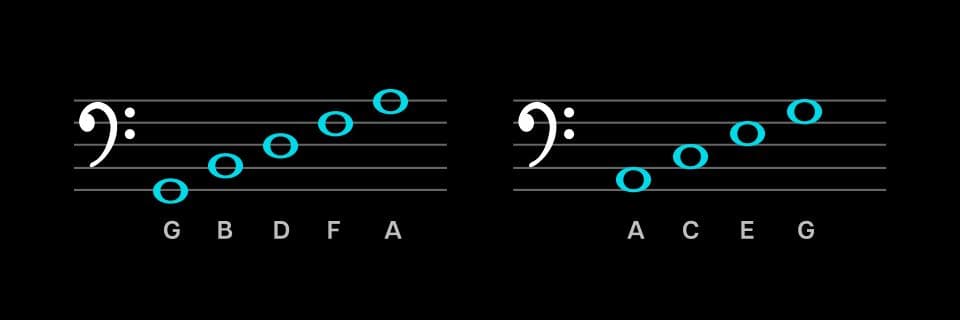
A common acronym to remember these line notes is “Good Boys Deserve Fudge Always” or “Good Boys Do Fine Always”. And for the spaces: “All Cows Eat Grass”.
Step 2 - The Notes
All notes have a note head, a stem, and sometimes a flag.
The note head is either black or white and tells the performer which notes to play. The stem is the thin vertical line attached to the note head. It joins on the right side of the note head when the stem is pointing up, and on the left side of the note head when it’s pointing down. The direction of the stem has no effect on the note, but it makes notation easier to read and less cluttered. The flag is the curved stroke attached to the end of the stem and is always on the right.
Step 3 - Note Value
Now that you know the parts of the note, another aspect of reading music is the note values. These tell us how many times to play a note in a measure (also called bars).
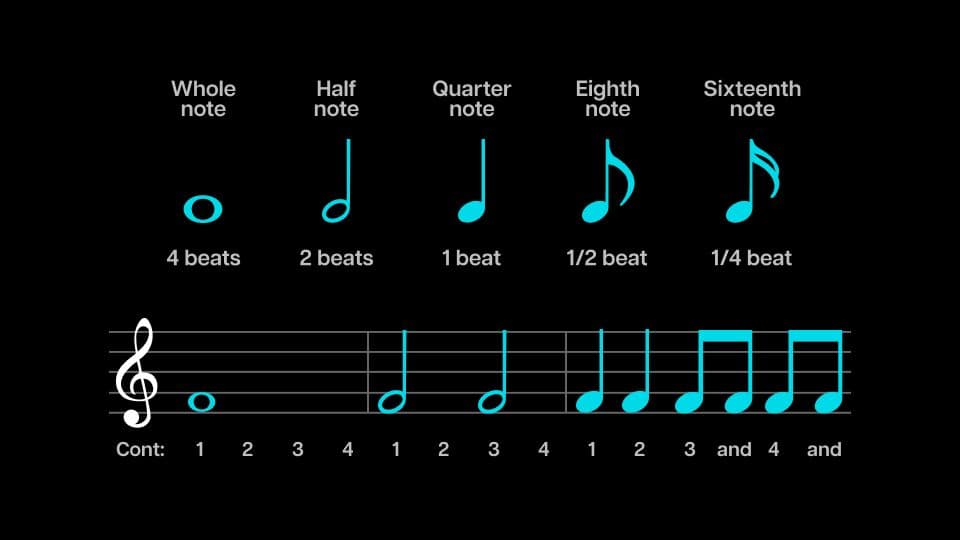
You’ve got whole, half, quarter, eighth, and sixteenth notes, all of these tell musicians how long they need to hold a note. For example, when playing guitar, a whole note (in a time signature of 4/4- more on that later) would be strummed one time for a count of 4, versus a quarter note would be strummed 4 times in the count of 4.
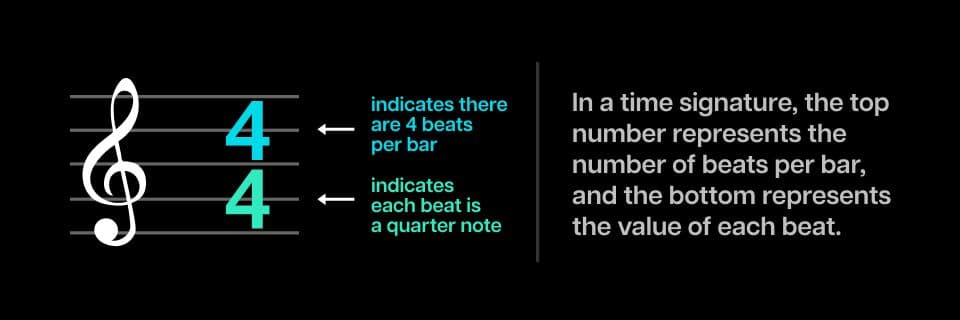
So in this example, there are 4 beats per bar and each beat is a quarter note. However, you could have (¾) and it would indicate there are 3 beats per bar and each note is a quarter note. There are more complex time signatures such as 6/8 or 9/8, but the principle remains the same. There are 6 or 9 beats per bar, and each beat is an eight note.
Step 4 - Sharps & Flats
Something that can look quite confusing when learning how to read sheet music is the sharps and flats on the staff. These are also called accidentals, and there are 5 types.

Accidentals are placed in front of the note they affect, and they only affect the note in that measure unless there is a tied note.
Two notes tied together should be held as long as the value of both of those notes together, and ties are commonly used to signify held notes that cross measures or bars. It looks like this:
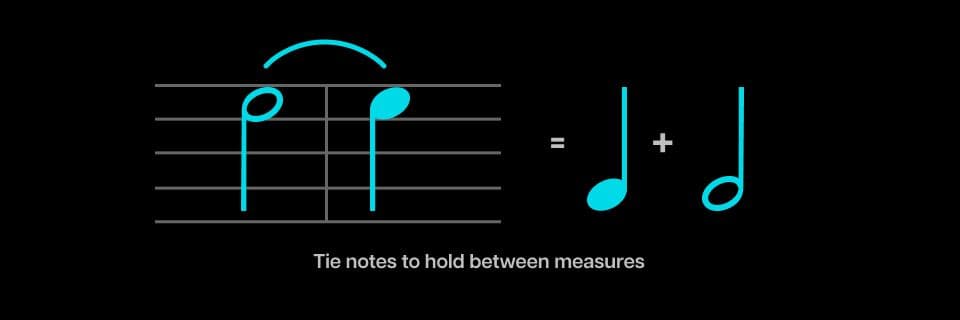
Step 5 - Ledger Lines
Ledger lines show a note located above or below the regular lines and spaces of the staff. ‘Middle C’ is one of the first notes music students learn because it’s located on a ledger line between the bass clef and treble clef. Ledger lines are used occasionally in music notation because it makes the notes easier to read than having to change between clefs. Though there can be an infinite number of ledger lines above or below any staff, it becomes difficult to read the music if there are more than three. At that point, it is worth it simply to change staffs.
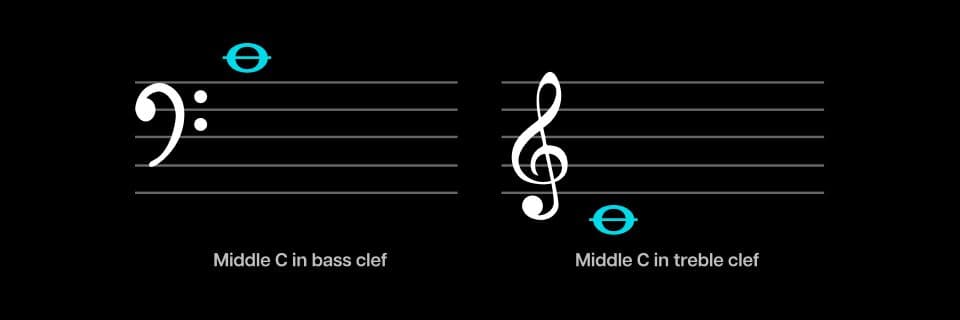
Step 6 - Keep Learning
While this may all seem confusing or overwhelming, Rome wasn’t built in a day, it takes some time to learn the nuances of reading sheet music. What we’ve discussed today doesn’t cover everything about sheet music, there are rests, dotted notes, and more, but this will give you a good foundation to begin your sheet music journey!
It also helps to learn this knowledge in different ways, for example, if you’re a tactile learner, watch some videos about practically applying sheet music to your specified instrument. If you’re an auditory learner, you can listen to a podcast or video to help you understand further. Don’t limit yourself! Find what works best for you and go with it, you can do hard things!
